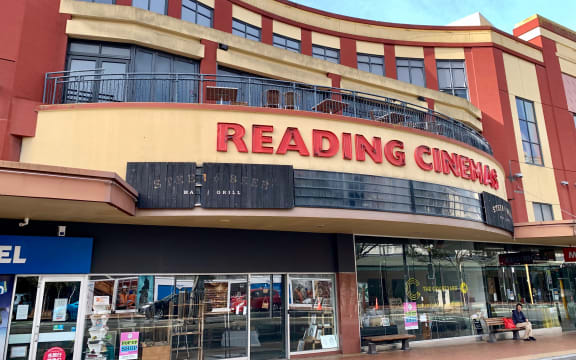Earthquake building strengthening rules could change, perhaps bringing some relief for those facing huge bills to upgrade their homes

Photo: RNZ / Rebekah Parsons-King
There's relief for building owners bending under the weight of earthquake strengthening rules - and costs - that came into force seven years ago.
Building and Construction Minister Chris Penk has announced a scheduled 2027 review of the earthquake-prone building regulations will now start this year. Owners will also get an extra four years to get these buildings up to code.
Today on The Detail we look at how rules that looked sensible in the wake of the two massive shakes in Christchurch and Kaikōura, turned toxic when councils and building owners found out how much it would cost to meet the new laws.
Masterton-based reporter for The Post Piers Fuller has spent several years covering these issues. He explains the law changes had goals of making buildings safer and saving lives.

The Reading Cinemas building on Courtenay Place in Wellington in April 2020, when it had already been closed for about a year after being deemed earthquake prone. Photo: CC 4.0 BY-SA / Tom Ackroyd
"The [Earthquake Prone Buildings Ammendment Act] brought clarity around identifying earthquake-prone buildings, about the council's obligations as to how they would get the owners to enforce their responsibilities around remediating those buildings, and also gave them timeframes to work to," he says.
"The timeframes were set on the risk levels that different parts of the country had. If you were in high risk areas, which does cover a lot of the country, you had effectively half the time that you may have in a low risk area."
High-risk areas include the east of the North Island, the east of the South Island down to mid-Canterbury and also most of the West Coast. The medium-risk zones are through the middle of the North Island and through parts of Canterbury and Otago. Low-risk areas include coastal Otago, Auckland and Northland.
The changes also brought in a national register of earthquake buildings. Many of those, which need to be demolished or renovated, are in the capital.
"It's a tsunami of deadlines that are coming up over the next three or four years - by the end of 2027 there's going to be almost 300 buildings in Wellington that have to be dealt with," Fuller says.
"Most of them take a high level of intervention. With 300 buildings with many owners quite reticent to do the work then you can imagine the obligation on a council to get those done and potential lawsuits - it's going to be really high."
There are, of course, issues further afield.

Masterton people rally to save their town hall Photo: LDR / Wairarapa Times Age / Jade Cvetkov
"The big effect on Masterton is the town hall was deemed earthquake prone. It's been empty for about five years. Replacement estimates for a new one went up to $70 million - you can imagine the Masterton ratepayers not wanting to pay $70 million for a new town hall. Masterton has 92 buildings which are earthquake prone, which is a lot for a small territorial authority to have to deal with.
"If you look at Ashburton, they've got a raft of buildings that are now past their deadline - every small town's going to have it.
"It's all gone out of kilter."
But concerns have been raised about the halt in progress should another big earthquake happen in the next four years.
"Any delay does nominally increase the risk," Structural Engineering Society of New Zealand Nic Brooke tells The Detail.
"It would be a concerning situation to me if there was a consideration after a quake that delay had actually led to these problems. The cost and expense of strengthening buildings needs to be weighed, in my mind, against all sorts of things we're juggling in the country. An obvious comparator to me is always road safety.
"The actual risk posed to people in buildings, even earthquake-prone buildings, is relatively low in comparison to other risks that we accept day-to-day.''
Brooke refers to many news stories over the last few years "about buildings, particularly in Wellington, being vacated because they don't achieve a certain earthquake standard".
The Government will agree on the review's terms of reference next month and the extensions to quake strengthening deadlines applies from April 2.
Check out how to listen to and follow The Detail here.
You can also stay up-to-date by liking us on Facebook or following us on Twitter.


